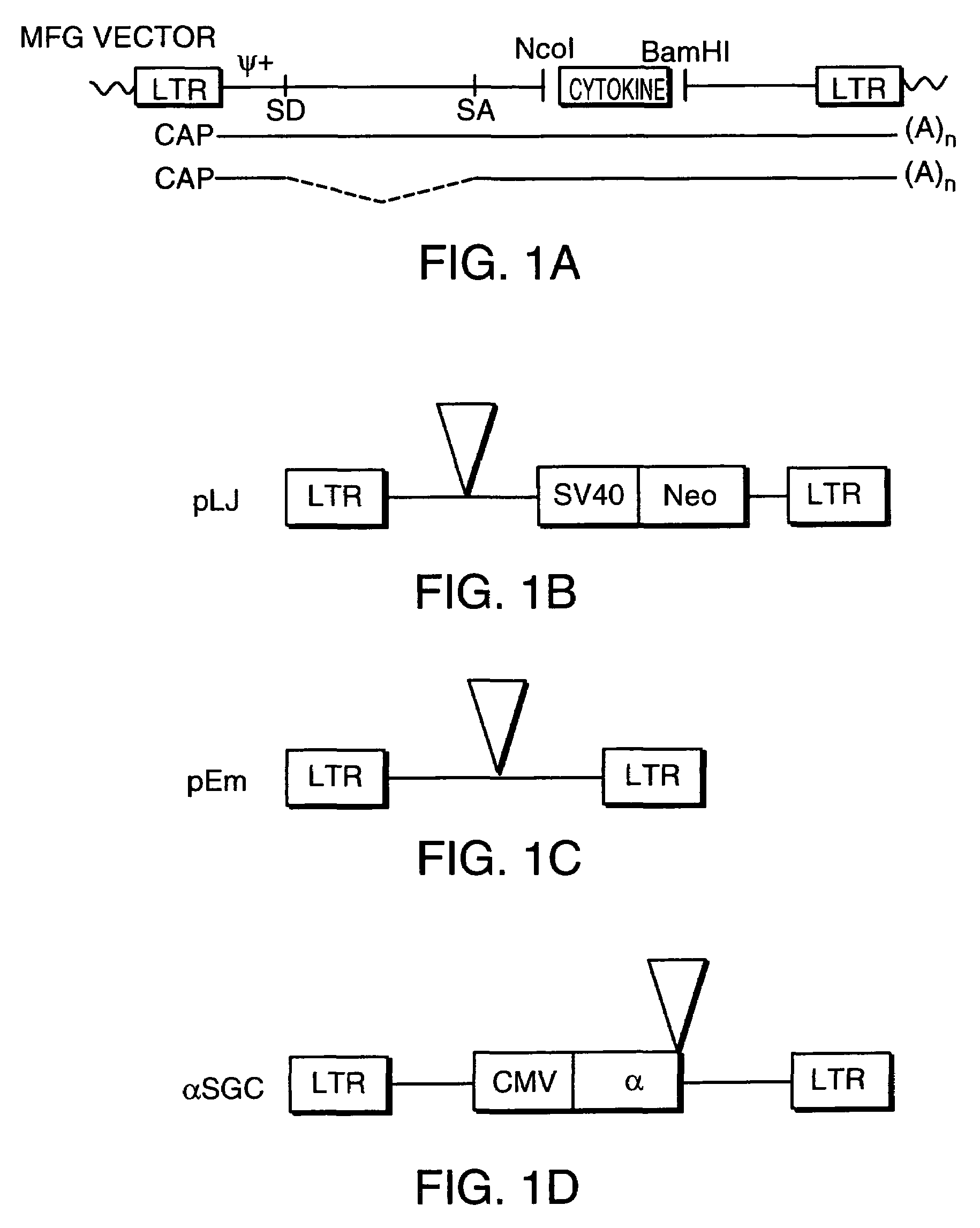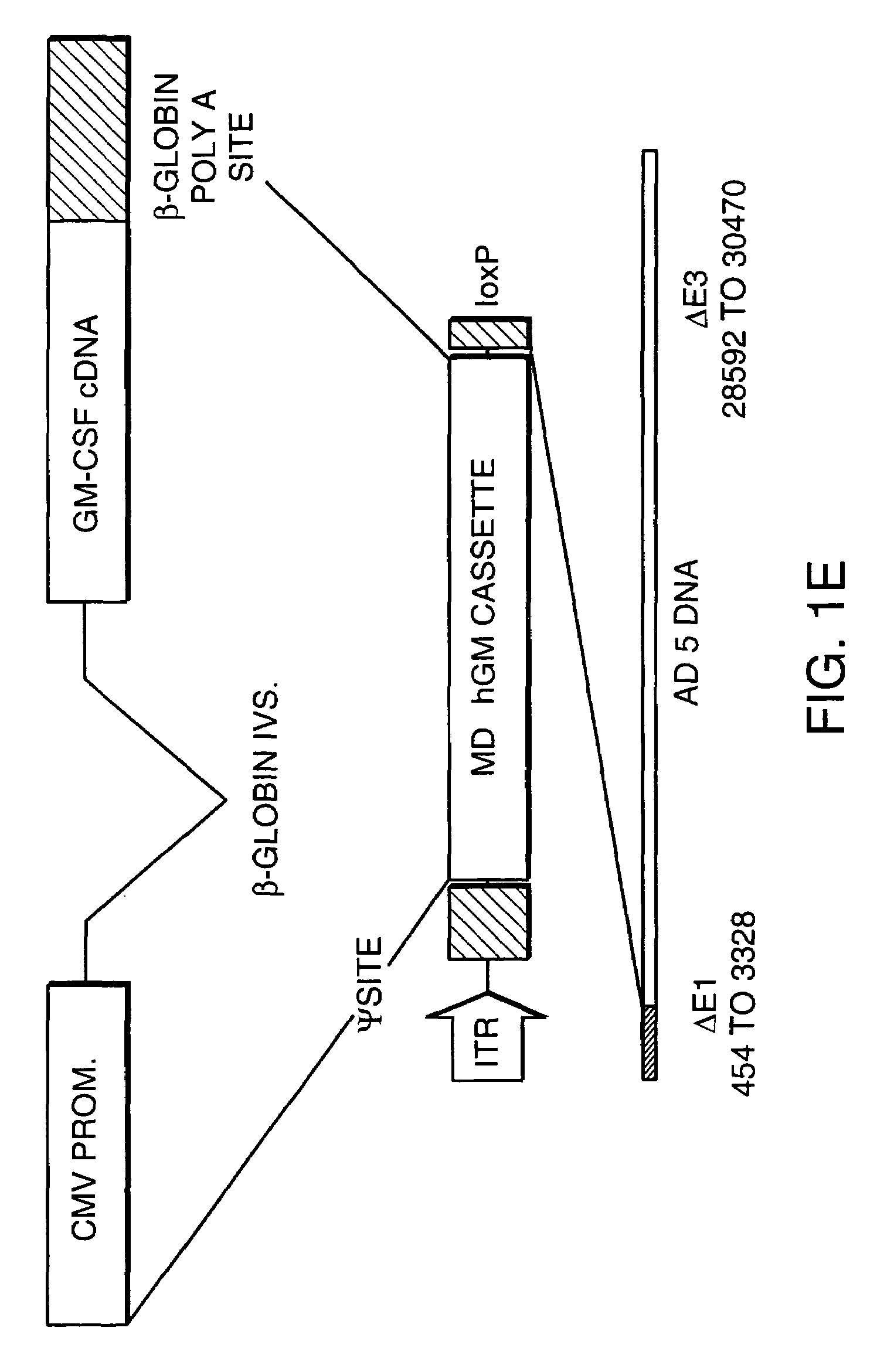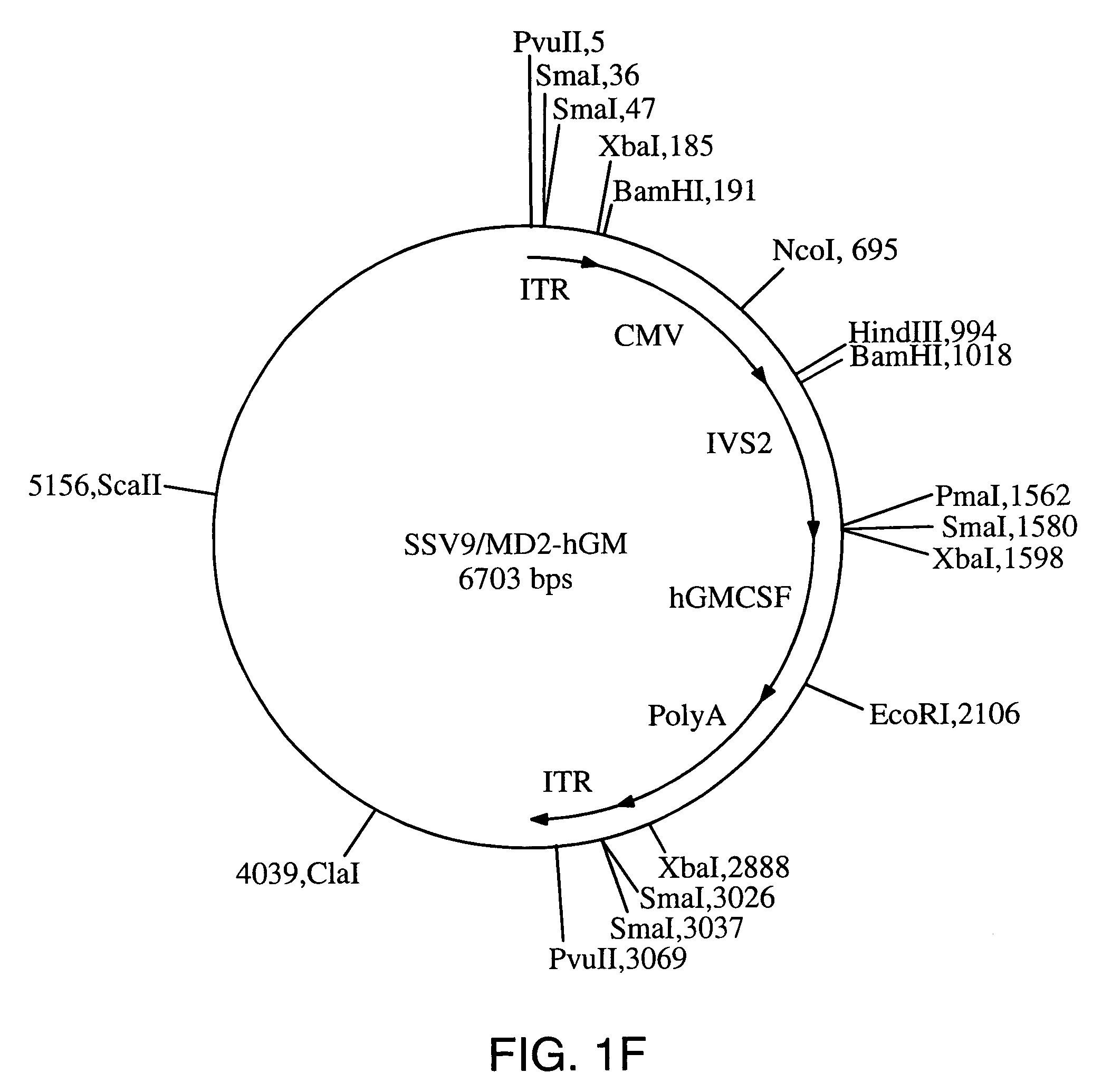Cancer-associated antigens and methods of their identification and use
a technology of cancer-associated antigens and methods, applied in the field of cancer diagnosis and therapy, can solve the problems of difficult to demonstrate the serological response to the tumor, clear limitations in both efficiency and toxicity, and the standard medical treatment of cancer, including chemotherapy, surgery and radiation therapy
- Summary
- Abstract
- Description
- Claims
- Application Information
AI Technical Summary
Benefits of technology
Problems solved by technology
Method used
Image
Examples
examples
1. Clinical Trials Using the GVAX® Vaccine
[0121]A. Generation of Recombinant Viral Vectors Encoding Cytokines for Preparation of GVAX® Vaccines
[0122]The following viral vectors encoding a cytokine were constructed for introduction into tumor cell lines or into primary tumor cells obtained from resected human tumors.
[0123](1) Retroviral Vectors
[0124]Construction of retroviral vectors employs standard ligation and restriction techniques which are well understood in the art. A variety of retroviral vectors containing a gene or genes encoding a cytokine of interest were used. The MFG vector is described in U.S. Ser. No. 07 / 607,252 entitled “Genetic Modification of Endothelial Cells”, filed Oct. 31, 1990, U.S. Ser. No. 07 / 786,015; “Retroviral Vectors Useful in Gene Therapy”, filed Oct. 31, 1991, and PCT / US91 / 08121, filed Oct. 31, 1991, the teachings of which are incorporated herein by reference. They are also described below with particular reference to the incorporation and expression o...
PUM
| Property | Measurement | Unit |
|---|---|---|
| Volume | aaaaa | aaaaa |
| Volume | aaaaa | aaaaa |
| Volume | aaaaa | aaaaa |
Abstract
Description
Claims
Application Information
 Login to View More
Login to View More - R&D
- Intellectual Property
- Life Sciences
- Materials
- Tech Scout
- Unparalleled Data Quality
- Higher Quality Content
- 60% Fewer Hallucinations
Browse by: Latest US Patents, China's latest patents, Technical Efficacy Thesaurus, Application Domain, Technology Topic, Popular Technical Reports.
© 2025 PatSnap. All rights reserved.Legal|Privacy policy|Modern Slavery Act Transparency Statement|Sitemap|About US| Contact US: help@patsnap.com



